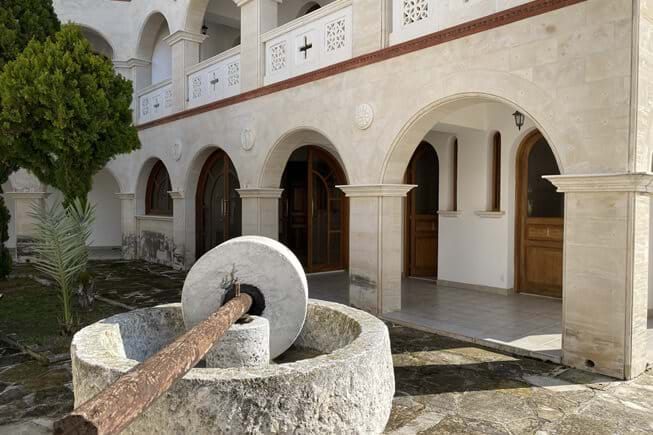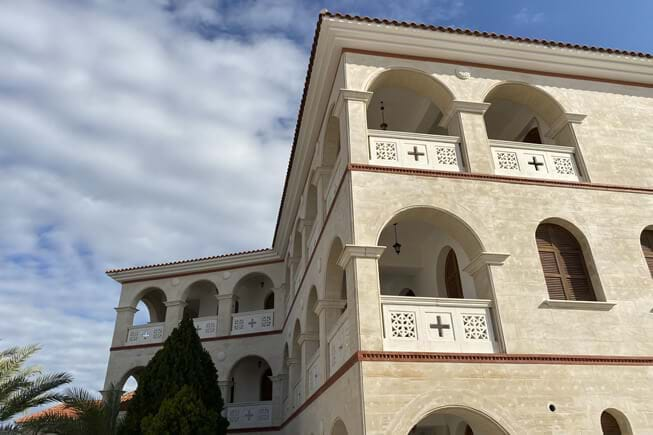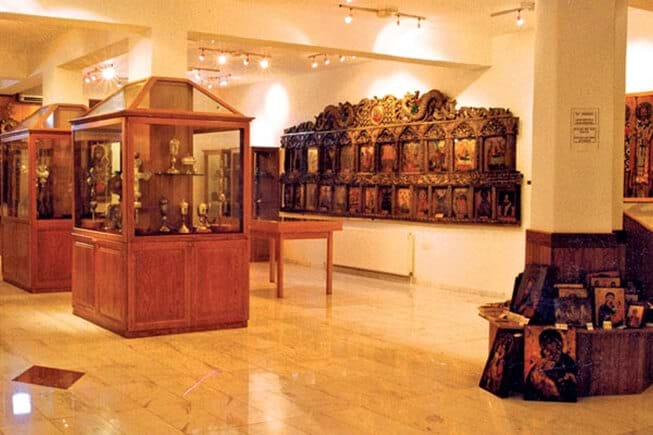Since the Byzantine Era, Christian worship has been conducted in the chapels of villages all around Chrysochous Bay. Each house of worship includes painted icons, wooden carvings, and metal work used in religious rites. The most precious of these items are gathered at the Byzantine Museum of Arsinoe, located in the Bishopric of Arsinoe in the village of Peristerona. Here, they are conserved in climate-controlled chambers and are available for public viewing. The collection of more than sixty icons dates from the 13th century. The oldest icon is an image of Saint George from the eponymous church in Panagia. A 14th century icon of the Virgin with child comes from the Saint Mamas Church in Peristerona. Icons are usually held in place in an iconostasis; the museum houses one carved from wood in the late 18th and early 19th centuries from Saint Marina, Kritou-Marottou. The collection includes rare books and manuscripts, including several Venetian bibles from the 16th century. An epitafios (a gold knitted representation of Christ’s bier used in Easter celebrations) and a bishop’s throne are among other items on display. Lamps, censers, plates, and chalices feature in a collection of metal work dating from the 16th century. You can also see the beautifully crafted clothing worn by the clergy, including gold knitted sleeve cuffs, embroidered vestments, maniples, buckles, and three bishop’s crowns. The museum offers a collection of books, postcards, and painted icons for sale. It is located about 10 kilometres from the town of Polis.


